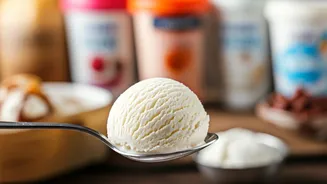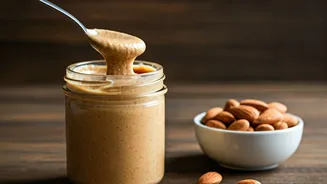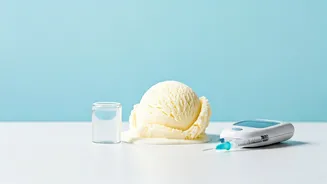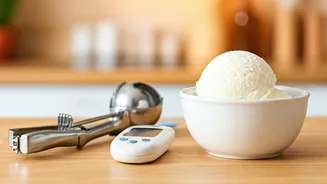Ice Cream and Sugar
Ice cream's effect on blood glucose levels is a key concern for individuals with diabetes. Regular ice cream consumption can lead to blood sugar spikes,
especially if it's high in sugar and carbohydrates. When consumed, sugars and carbohydrates are converted into glucose, which enters the bloodstream. The body's response, through insulin, helps manage these levels. However, people with diabetes may have insulin resistance or insufficient insulin production, resulting in blood sugar fluctuations. To minimize the impact, portion control is crucial. Consider the Glycemic Index (GI) and Glycemic Load (GL) of ice cream. Lower GI foods release glucose more slowly, providing a gentler rise in blood sugar. Combining ice cream with protein and healthy fats can also help slow down sugar absorption. Furthermore, regular blood sugar monitoring is important to personalize ice cream consumption. By considering these factors, people with diabetes can make informed decisions and enjoy ice cream without major health risks. Always check your blood sugar levels and consult your doctor before making any changes to your diet.
Diabetes-Friendly Options
Several ice cream options are more suitable for people with diabetes. The best choices often involve lower sugar content, reduced carbohydrates, and the inclusion of healthy fats. One popular alternative is sugar-free ice cream, which uses sweeteners like stevia, erythritol, or sucralose instead of sugar. It's crucial to check labels to avoid hidden sugars and ensure the product fits within your daily carbohydrate limits. Another type includes low-carb ice cream. These options utilize alternative ingredients to decrease carbohydrate load, which minimizes the impact on blood sugar. Additionally, consider ice creams made with natural sweeteners like fruits or honey in moderation. It's equally important to pay attention to portion sizes. Even diabetes-friendly ice creams can raise blood sugar if consumed in large quantities. Also, look for ice creams with added fiber, as fiber can help slow down the absorption of sugar. Selecting products with high protein content, like those containing nuts or seeds, can offer additional benefits by slowing down sugar release. Careful label reading and making smart choices can help individuals with diabetes enjoy their favorite dessert while staying mindful of their health goals.
Smart Consumption Tips
To enjoy ice cream safely with diabetes, several smart consumption tips can be followed. First, portion control is vital. Opt for smaller servings to limit the intake of sugars and carbohydrates. Consider choosing a half-cup serving size or opting for single-serve options to prevent overeating. Second, eat ice cream in conjunction with a meal. Combining ice cream with protein, healthy fats, and fiber-rich foods helps slow down the absorption of sugar, thereby reducing blood sugar spikes. A balanced meal can help maintain stable blood sugar levels. Thirdly, pay attention to the timing of consumption. It's best to consume ice cream at a time when you can monitor your blood sugar levels and assess its impact. Avoid consuming ice cream on an empty stomach; this can lead to quicker sugar absorption. Finally, make it a conscious choice rather than an impulsive treat. Plan when you'll enjoy ice cream as part of a meal and track its effect on your blood sugar levels. By implementing these tips, individuals with diabetes can enjoy ice cream without compromising their health goals. Regular blood sugar monitoring and consistent management strategies are essential for a healthy and fulfilling lifestyle.











